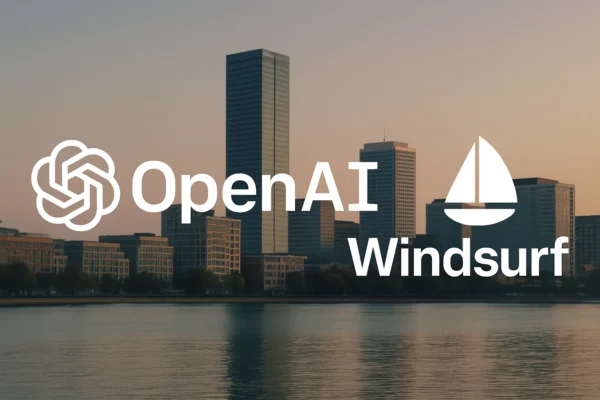
Nvidia’s $500B plan to build American-made AI supercomputers in the U.S. drives innovation, jobs, and tech leadership. Explore the future of AI infrastructure.
Nvidia’s ambitious plan to invest up to $500 billion over four years in US-based artificial intelligence (AI) infrastructure marks a historic shift, with the company announcing on April 14, 2025, that it will produce AI supercomputers entirely in the United States for the first time. This initiative, centered on manufacturing advanced AI chips and supercomputers domestically, positions the nation to lead the global AI revolution, fostering economic growth and technological advancement through strategic partnerships and cutting-edge innovation.
Nvidia’s Strategic Investment
Domestic Manufacturing Expansion
Nvidia has launched a transformative effort to localize AI supercomputer production, collaborating with industry leaders such as TSMC, Foxconn, Wistron, Amkor, and SPIL. Production of Nvidia’s Blackwell AI chips is underway at TSMC’s state-of-the-art facility in Phoenix, Arizona, with packaging and testing handled by Amkor and SPIL in the same region. Concurrently, Nvidia is constructing supercomputer manufacturing plants in Texas, partnering with Foxconn in Houston and Wistron in Dallas. These facilities, spanning over one million square feet, are designed to produce next-generation AI supercomputers, with mass production targeted to begin within 12 to 15 months, contingent on streamlined construction and workforce readiness.
The Blackwell chips, engineered for complex AI workloads, deliver significant performance enhancements, enabling applications from machine learning to scientific simulations. Nvidia is leveraging its own technologies—such as the Omniverse platform for digital twins, Isaac GR00T robotics, and generative AI—to design and automate these factories, ensuring efficiency and scalability. This “American-made” approach not only strengthens Nvidia’s production capacity but also aligns with national efforts to revitalize advanced manufacturing.
Supply Chain Resilience
By establishing US-based production, Nvidia aims to fortify its supply chain against global disruptions, including geopolitical tensions and trade uncertainties. Recent challenges, such as semiconductor shortages and potential tariffs, highlight the urgency of domestic resilience. Localizing chip and supercomputer manufacturing reduces reliance on overseas logistics, particularly from regions like Taiwan, while partnerships with global firms like TSMC ensure access to cutting-edge fabrication. However, full independence remains elusive, as raw materials and specialized components still draw from global markets, underscoring the need for continued diversification.
Economic and Technological Implications
Job Creation and Economic Growth
Nvidia’s initiative is poised to generate substantial economic benefits, with projections of “hundreds of thousands of jobs” across direct manufacturing roles and indirect opportunities in supply chains, construction, and technology services. Arizona and Texas are emerging as key hubs, with new facilities expected to stimulate local economies, attract ancillary industries, and support workforce development. While precise job numbers depend on project execution and sustained AI demand, the scale of investment signals a long-term commitment to US prosperity, potentially contributing “trillions of dollars in economic security” over decades, as envisioned by Nvidia’s leadership.
Advancement in AI Capabilities
The Blackwell architecture powers what Nvidia calls “AI factories”—data centers optimized for generative AI, scientific computing, and industrial applications. These chips enable breakthroughs in healthcare (e.g., AI-driven diagnostics), finance (e.g., predictive modeling), and national security (e.g., simulations for defense). By producing these technologies domestically, Nvidia ensures US industries and research institutions have priority access, accelerating innovation. The integration of Nvidia’s AI, robotics, and digital twin platforms in factory design further enhances production efficiency, setting a new standard for smart manufacturing.
Global Context and Competitive Landscape
The United States leads in supercomputing, exemplified by systems like El Capitan, which achieved 1.742 exaFLOPS in November 2024, securing its rank as the world’s fastest supercomputer. Nvidia’s investment amplifies this advantage, equipping the nation to meet surging global demand for AI infrastructure. Other nations are advancing—China, for instance, develops domestic chips despite US export controls, while Europe and Japan bolster high-performance computing. Yet, Nvidia’s unmatched scale, paired with US policy support like the CHIPS and Science Act of 2022, creates a formidable edge, provided challenges like energy costs and talent availability are navigated effectively.
Critical Considerations
Nvidia’s $500 billion vision, while groundbreaking, carries uncertainties. The figure reflects the projected value of AI infrastructure produced, including partner contributions, and assumes robust market demand, which could fluctuate with economic shifts. Environmental concerns, particularly the energy demands of AI “gigawatt factories,” require sustainable solutions to avoid regulatory or public backlash. Competition from AMD, Intel, and hyperscalers like Google, developing proprietary AI chips, could challenge Nvidia’s dominance. Additionally, the 12–15-month timeline for mass production hinges on overcoming logistical hurdles, such as permitting and skilled labor shortages.
Nvidia’s commitment to manufacturing American-made AI supercomputers, backed by a $500 billion investment, represents a defining moment for US technology and economy. By producing Blackwell chips and supercomputers in Arizona and Texas, leveraging advanced AI and robotics, and creating hundreds of thousands of jobs, Nvidia is not only meeting global AI demand but also reinforcing the nation’s capacity to shape the future of innovation. While challenges remain, this strategic initiative positions the United States at the forefront of the AI era, ensuring its influence in global technology endures.






